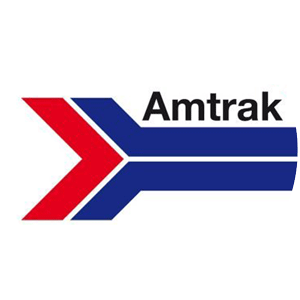

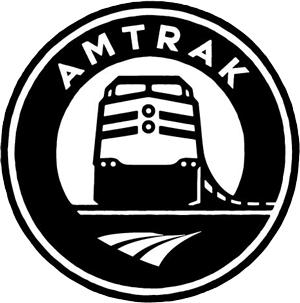
Pacific Surfliners
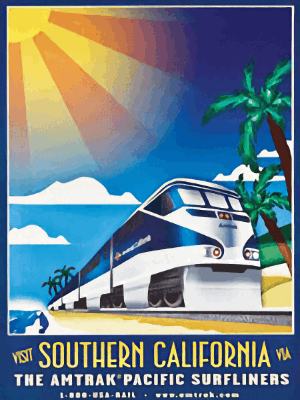
 he Pacific Surfliner is a 350-mile passenger train route operated by Amtrak, with funding from the California Department of Transportation as part of the Amtrak California network. The Pacific Surfliner serves communities on the coast of Southern California between San Diego and San Luis Obispo. The Los Angeles to San Diego portion of the Pac Surf route was once served by the Santa Fe Railway's San Diegan passenger trains. In 1988, long after Amtrak's takeover of the service, the route was extended to Santa Barbara; in 1995 a one trip a day was added going all the way to San Luis Obispo. By 2000, the name "San Diegan" no longer reflected the entire expanse of the route, so Amtrak renamed renamed the service the Pacific Surfliner. The name honors the legacy of the Atchison, Topeka & Santa Fe Railway's Surf Line. Because the San Diego, San Luis Obispo, and Goleta stations are not equipped to turn equipment, Pac Surf trains are operated in push-pull mode: the locomotive is at the rear of the train, pushing the train from Goleta/San Luis Obispo or San Diego to Los Angeles. At Los Angeles, the train reverses at the station, and pulls the train to San Diego or Goleta/San Luis Obispo, respectively.
he Pacific Surfliner is a 350-mile passenger train route operated by Amtrak, with funding from the California Department of Transportation as part of the Amtrak California network. The Pacific Surfliner serves communities on the coast of Southern California between San Diego and San Luis Obispo. The Los Angeles to San Diego portion of the Pac Surf route was once served by the Santa Fe Railway's San Diegan passenger trains. In 1988, long after Amtrak's takeover of the service, the route was extended to Santa Barbara; in 1995 a one trip a day was added going all the way to San Luis Obispo. By 2000, the name "San Diegan" no longer reflected the entire expanse of the route, so Amtrak renamed renamed the service the Pacific Surfliner. The name honors the legacy of the Atchison, Topeka & Santa Fe Railway's Surf Line. Because the San Diego, San Luis Obispo, and Goleta stations are not equipped to turn equipment, Pac Surf trains are operated in push-pull mode: the locomotive is at the rear of the train, pushing the train from Goleta/San Luis Obispo or San Diego to Los Angeles. At Los Angeles, the train reverses at the station, and pulls the train to San Diego or Goleta/San Luis Obispo, respectively.
Connecting San Luis Obispo and San Diego through Los Angeles and Santa Barbara, the Pacific Surfliner route offers a unique vantage on the Southern California seascape. To get a closer look, you'd have to be on a surfboard, which, believe it or not, you're welcome to bring onboard, since Pacific Surfliner trains have special racks to accommodate the bikes and boards of our more outdoor-minded riders.
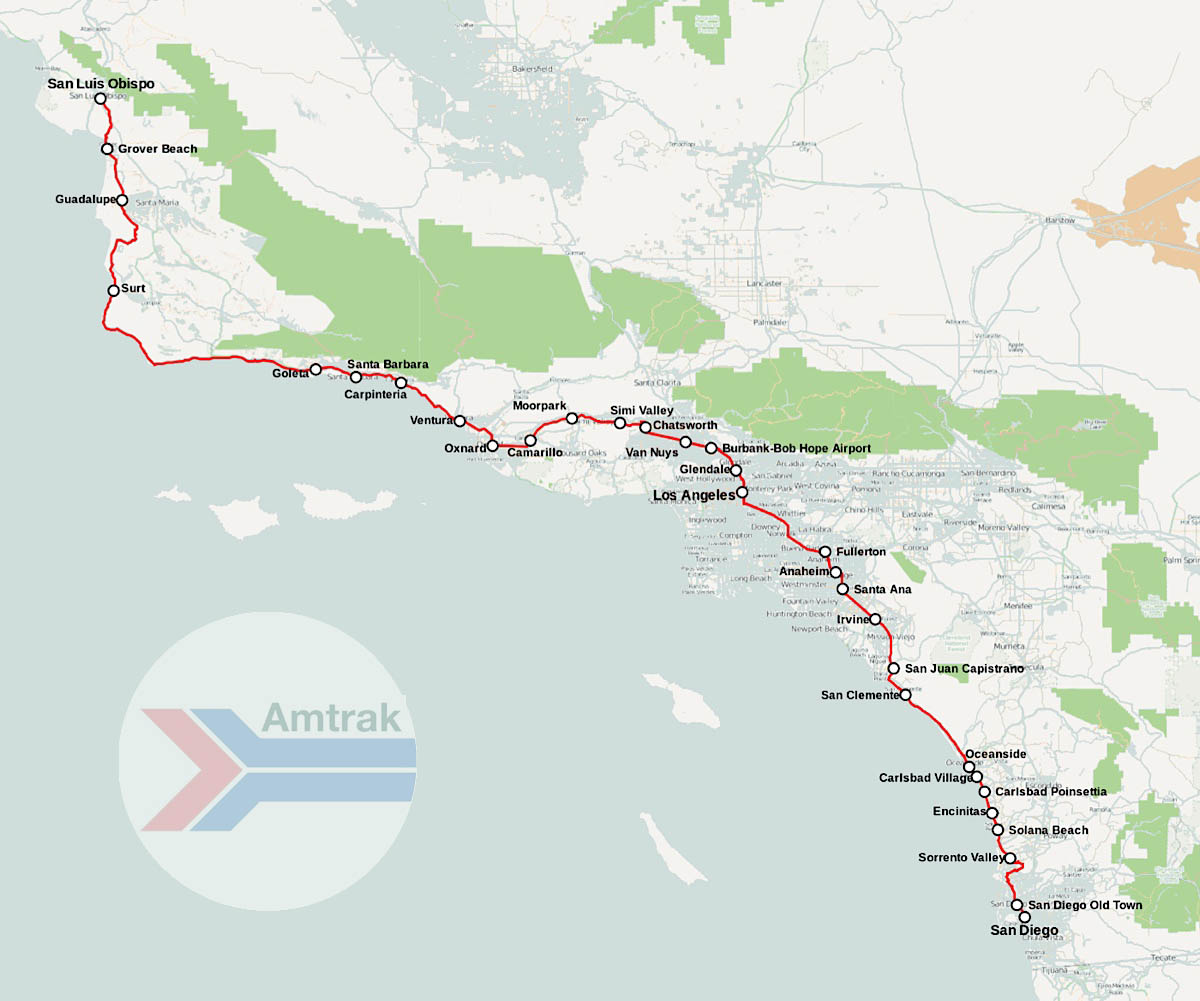
Pacific Surfliners route map / RWH
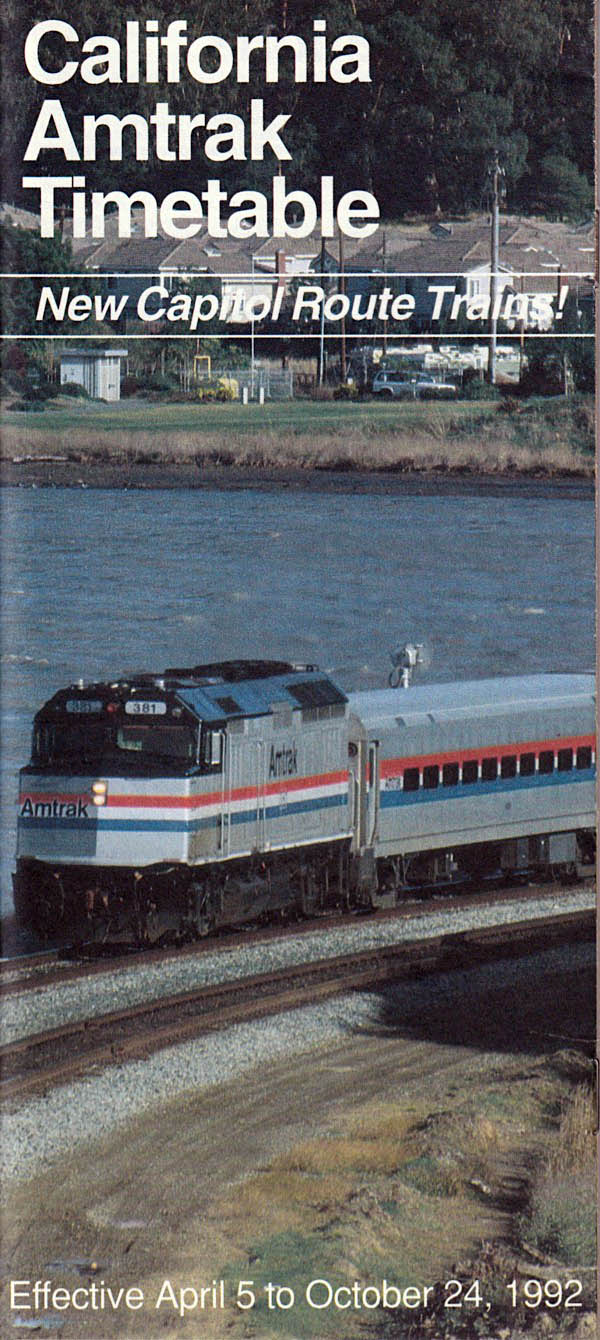
1992 timetable / collection
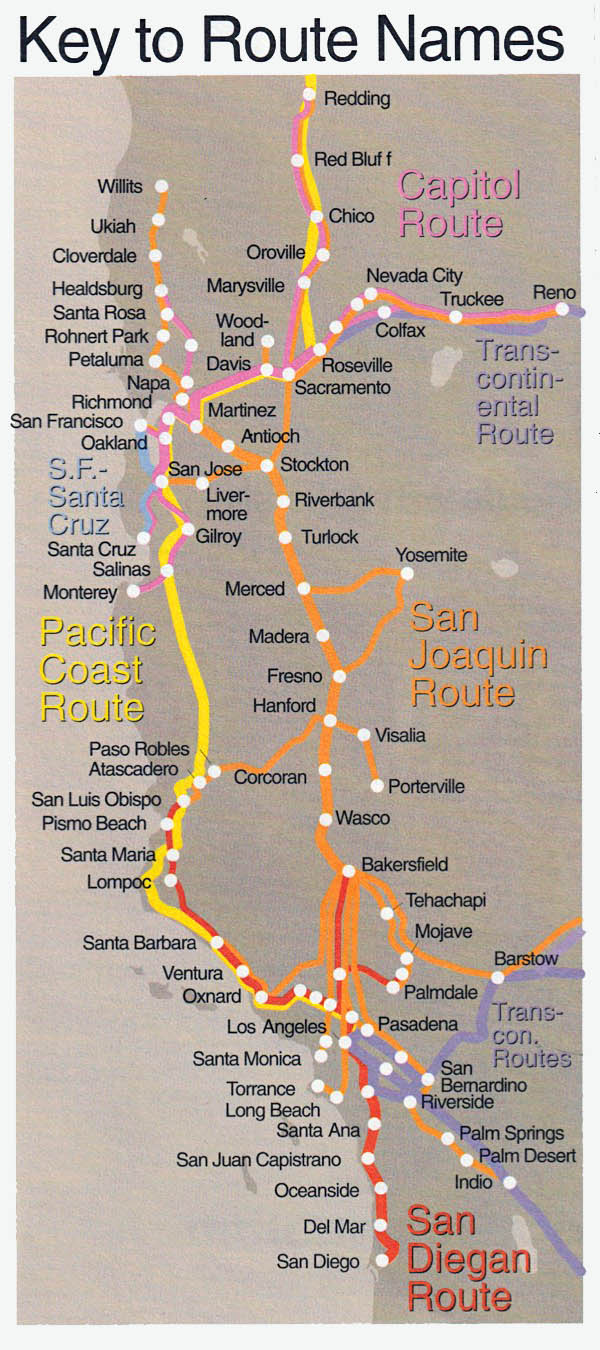

See also our Coaster commuter and San Diego Trolley scrapbooks in Streetcars
Motive Power
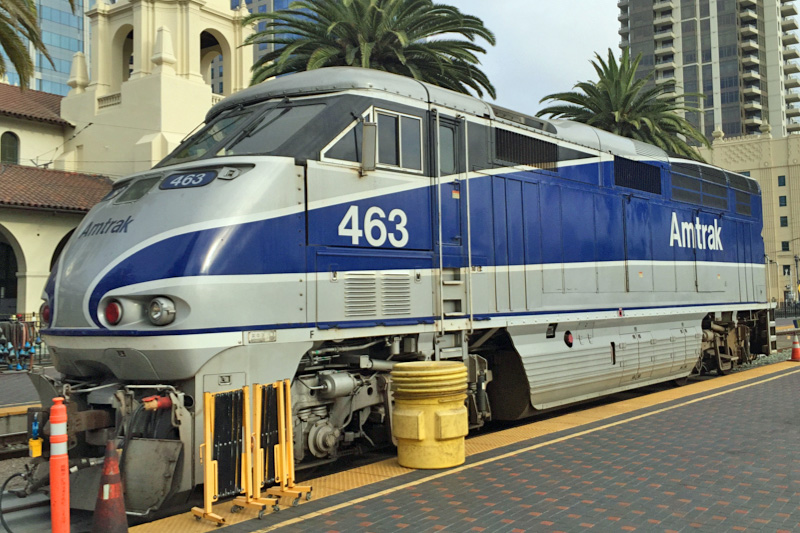
Amtrak #463
San Diego, Ca / Aug 2015 / RWH


Amtrak #463


San Diego, Ca / Aug 2015 / RWH

San Diego, Ca / Aug 2015 / RWH
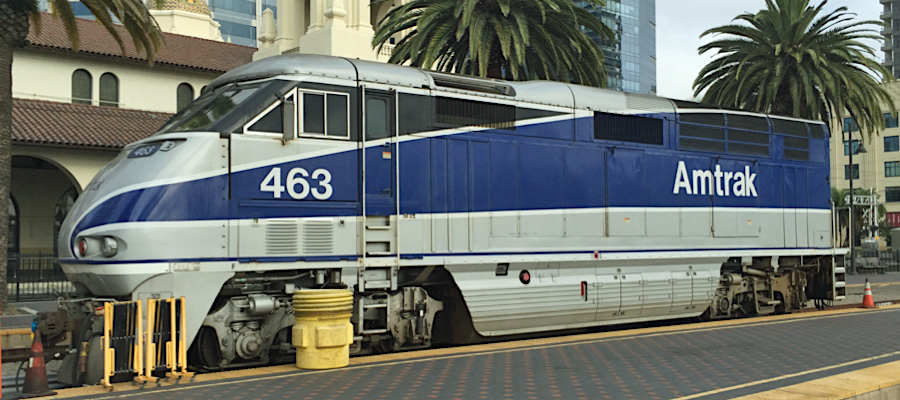
San Diego, Ca / Aug 2015 / RWH
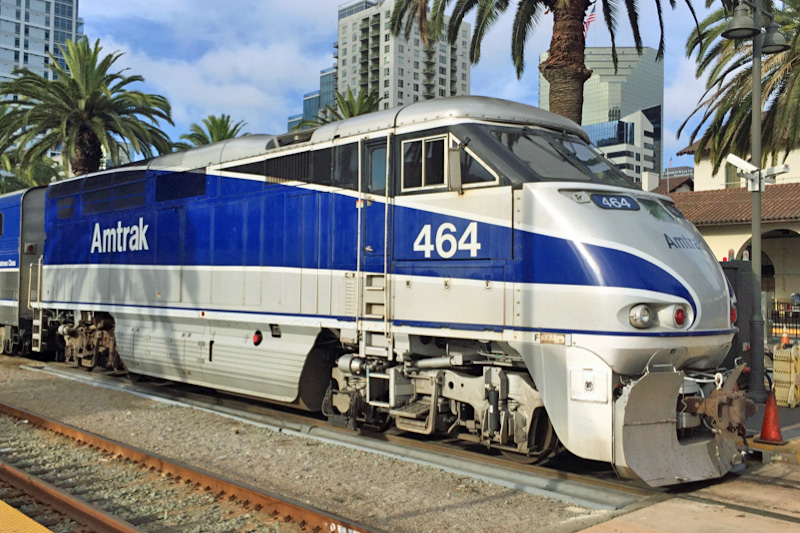
Amtrak #464
San Diego, Ca / Aug 2015 / RWH


Amtrak #464


Aug 2015 / RWH
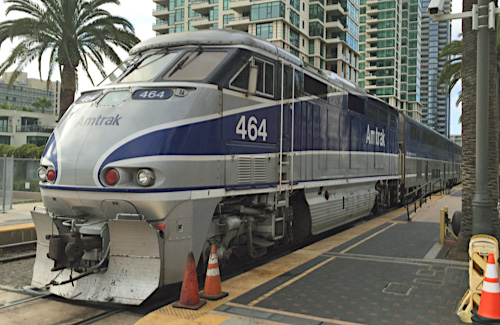
San Diego, Ca / Aug 2015 / RWH
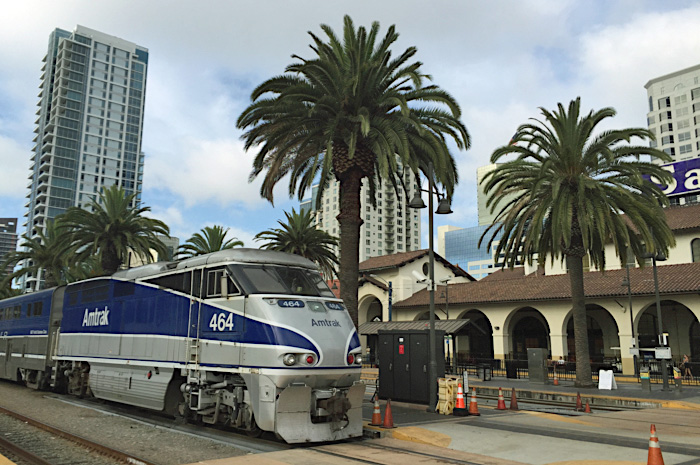
San Diego, Ca / Aug 2015 / RWH
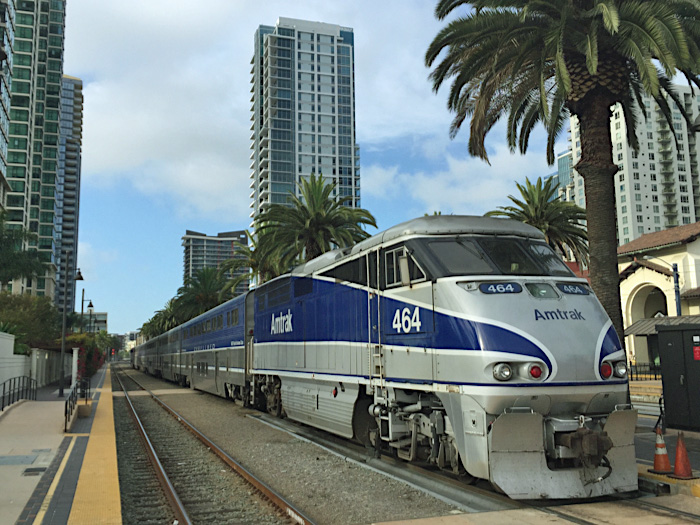
San Diego, Ca / Aug 2015 / RWH
 San Diego, Ca
San Diego, Ca
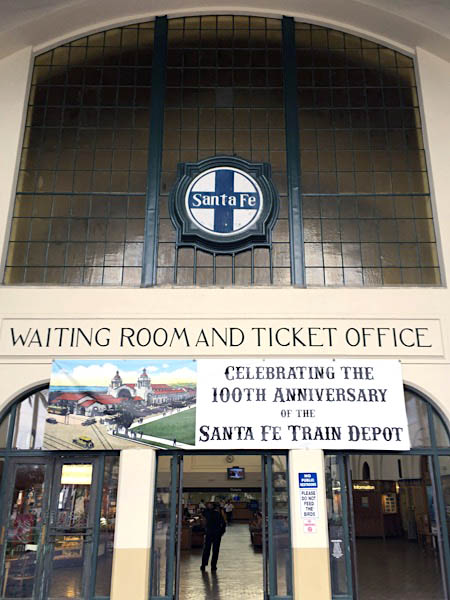
Aug 2015 / RWH

San Diego, Ca / Aug 2015 / RWH

Click to see the historic Santa Fe Depot area plotted on a Google Maps page
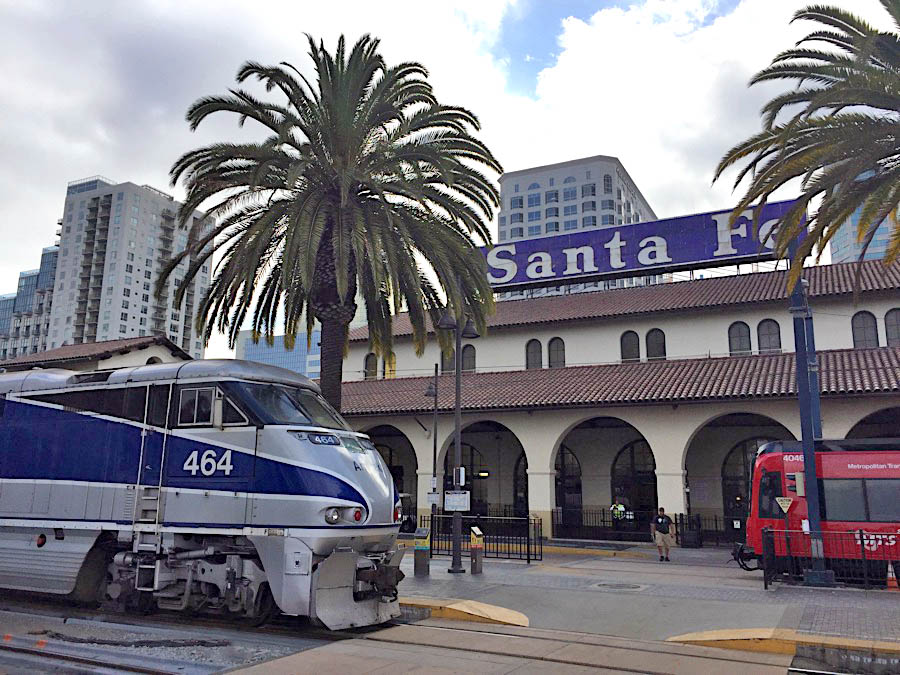
San Diego, Ca / Aug 2015 / RWH
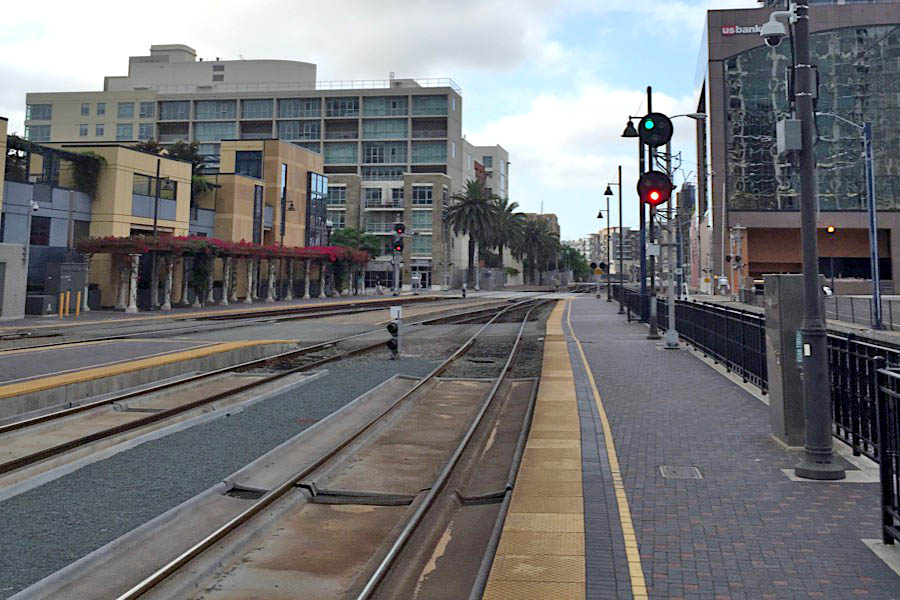
San Diego, Ca / Aug 2015 / RWH
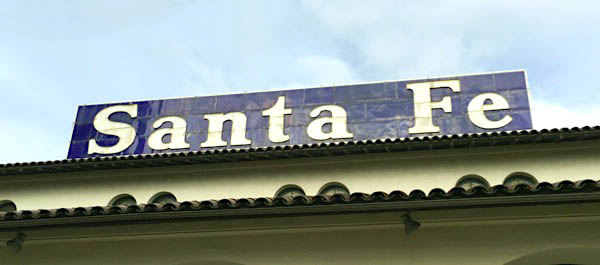
San Diego, Ca / Aug 2015 / RWH

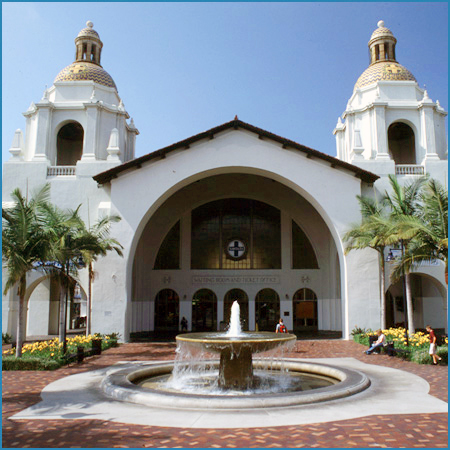 Union Station, also known as the “Santa Fe Depot,” has served residents and visitors to San Diego for more than a century. Located in the heart of downtown near the cruise ship piers and other bayside attractions, the station anchors the larger Santa Fe Place, named after the Atchison, Topeka, and Santa Fe Railroad (ATSF) that conceived and built the station from 1914–1915. The 15 acres around the building are being developed as a new mixed-use quarter that will enliven the city center and fill in empty parcels with shops, residential units, and office space.
Union Station, also known as the “Santa Fe Depot,” has served residents and visitors to San Diego for more than a century. Located in the heart of downtown near the cruise ship piers and other bayside attractions, the station anchors the larger Santa Fe Place, named after the Atchison, Topeka, and Santa Fe Railroad (ATSF) that conceived and built the station from 1914–1915. The 15 acres around the building are being developed as a new mixed-use quarter that will enliven the city center and fill in empty parcels with shops, residential units, and office space.
Due to its role as a major transportation hub for southern California, San Diego often ranks among the top ten busiest stations in the national Amtrak network; the Pacific Surfliner is one of the most popular Amtrak routes. Many travelers remember the rows of palms that line the platforms at the Santa Fe Depot and stretch to the horizon.
The new Santa Fe Depot was designed by the San Francisco firm of Bakewell and Brown. The partners had both worked for Bernard Maybeck in the San Francisco Bay area where he was known for his singular Arts and Crafts aesthetic. Arthur Brown, Jr. was also a graduate of the École des Beaux-Arts where he learned the principles of neoclassical architecture and space planning. While they were working on the San Diego station, the duo was also finishing the design for the San Francisco Civic Center, considered one of the country’s finest Beaux-Arts complexes.
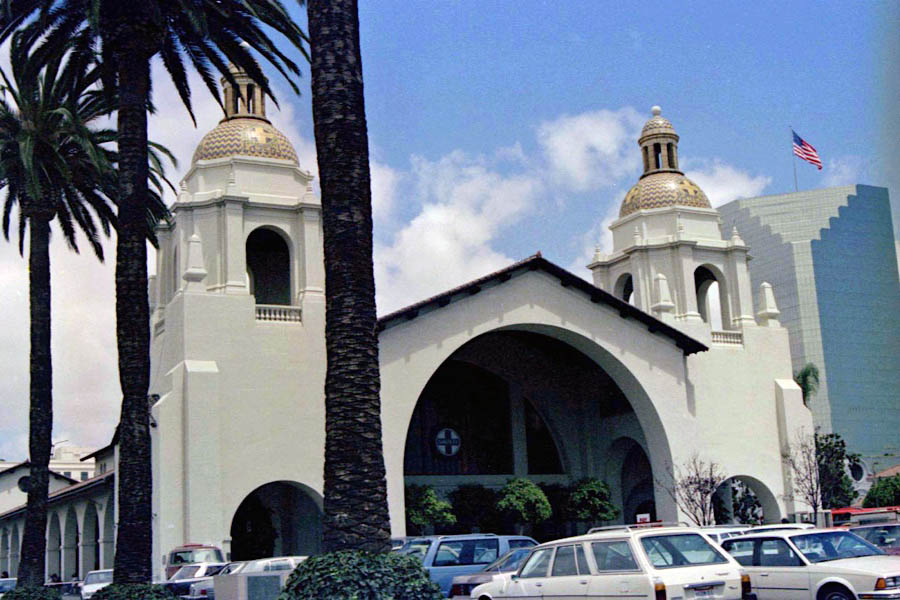
San Diego, Ca / Aug 1987 / RWH
 The San Diegan
The San Diegan
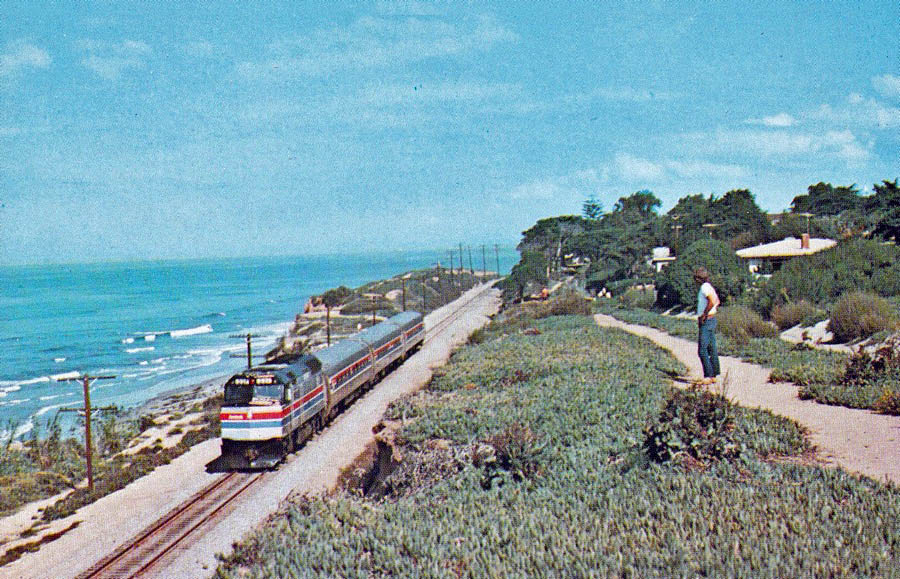
postcard / collection
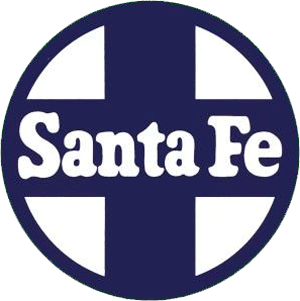 The San Diegan was one of the named passenger trains of the Atchison, Topeka and Santa Fe Railway, and a “workhorse” of the railroad. Its 126-mile (203-kilometer) route ran from Los Angeles, California south to San Diego. It was assigned train Nos. 70–79 (Nos. 80–83 were added in 1952 when RDCs began operating on the line).
The San Diegan was one of the named passenger trains of the Atchison, Topeka and Santa Fe Railway, and a “workhorse” of the railroad. Its 126-mile (203-kilometer) route ran from Los Angeles, California south to San Diego. It was assigned train Nos. 70–79 (Nos. 80–83 were added in 1952 when RDCs began operating on the line).
The Los Angeles-San Diego corridor was to the Santa Fe what the New York City–Philadelphia corridor was to the Pennsylvania Railroad. Daily traffic could reach a density of ten trains (each way) during the summer months. From the Los Angeles/Orange County border to San Diego, it ran along the Surf Line (officially, the Fourth District of the Los Angeles Division), which was so named because much of its trackage came within fewer than 100 feet of the Pacific Ocean.
The first San Diegan ran on March 27, 1938 as one set of equipment making two round trips a day. A second trainset delivered in 1941 made possible four streamlined trains each way. A set of heavyweight equipment made a fifth trip in each direction. During and after the Second World War, furlough business from San Diego's military bases necessitated extra (albeit heavyweight) sections of San Diegans, and racetrack specials during horseracing season at Del Mar added to passenger train miles.
Amtrak continued to operate the San Diegan when it took over operation of the nation's passenger service on May 1, 1971. After extending the route to the Central Coast in the 1980s and 1990s, Amtrak rebranded the route as the Pacific Surfliner on June 1, 2000.
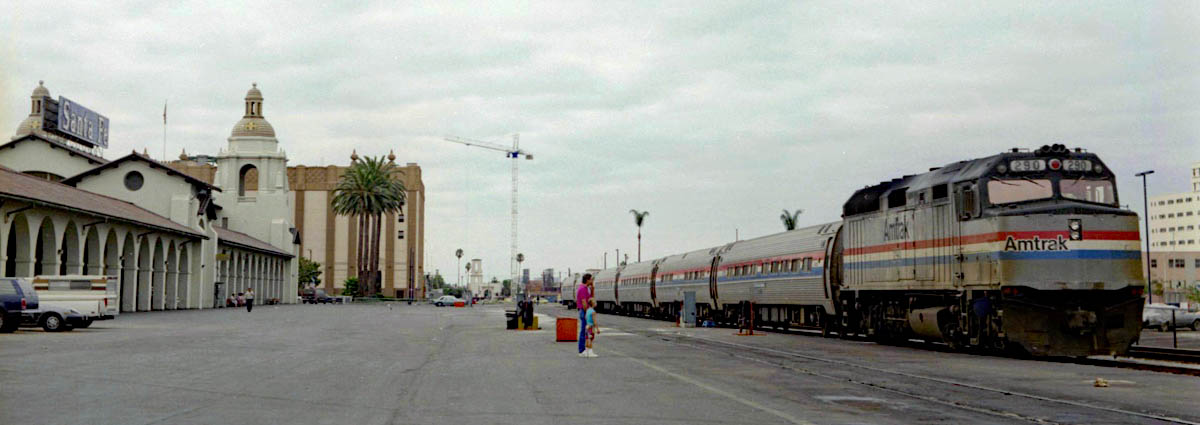
San Diego, Ca / Aug 1987 / JCH
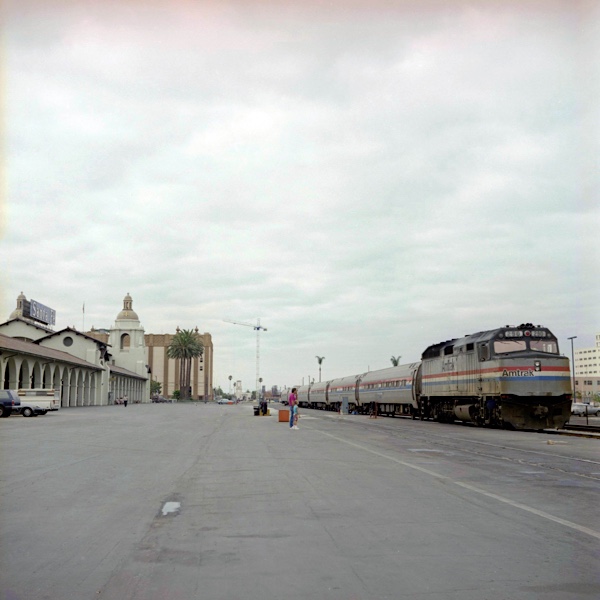
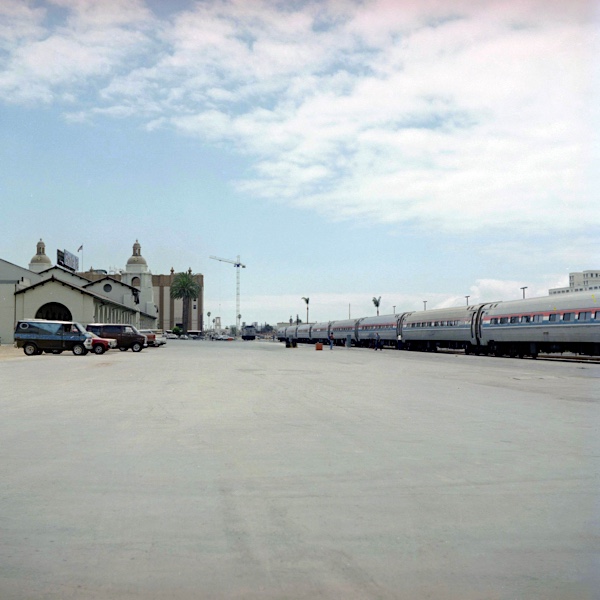
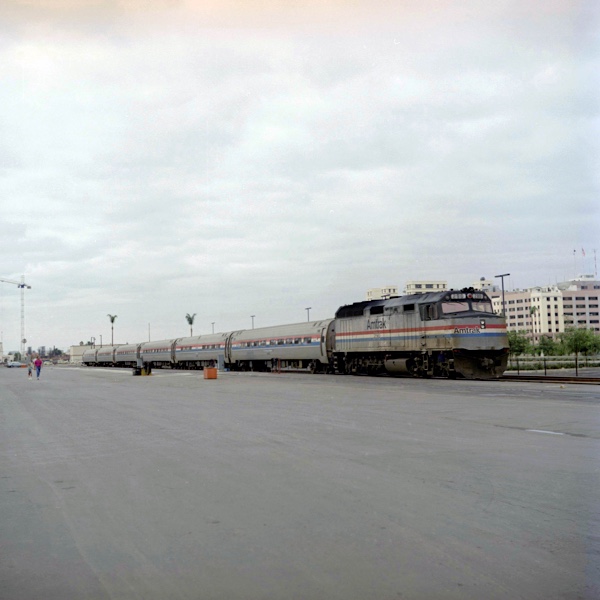
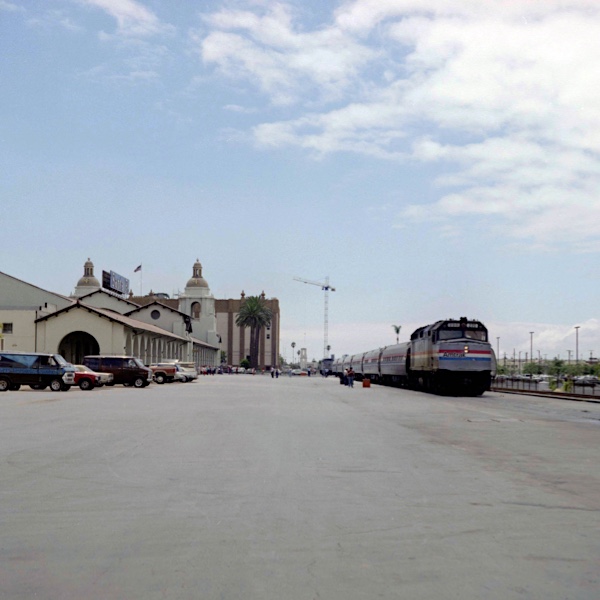
San Diego, Ca / Aug 1987 / JCH
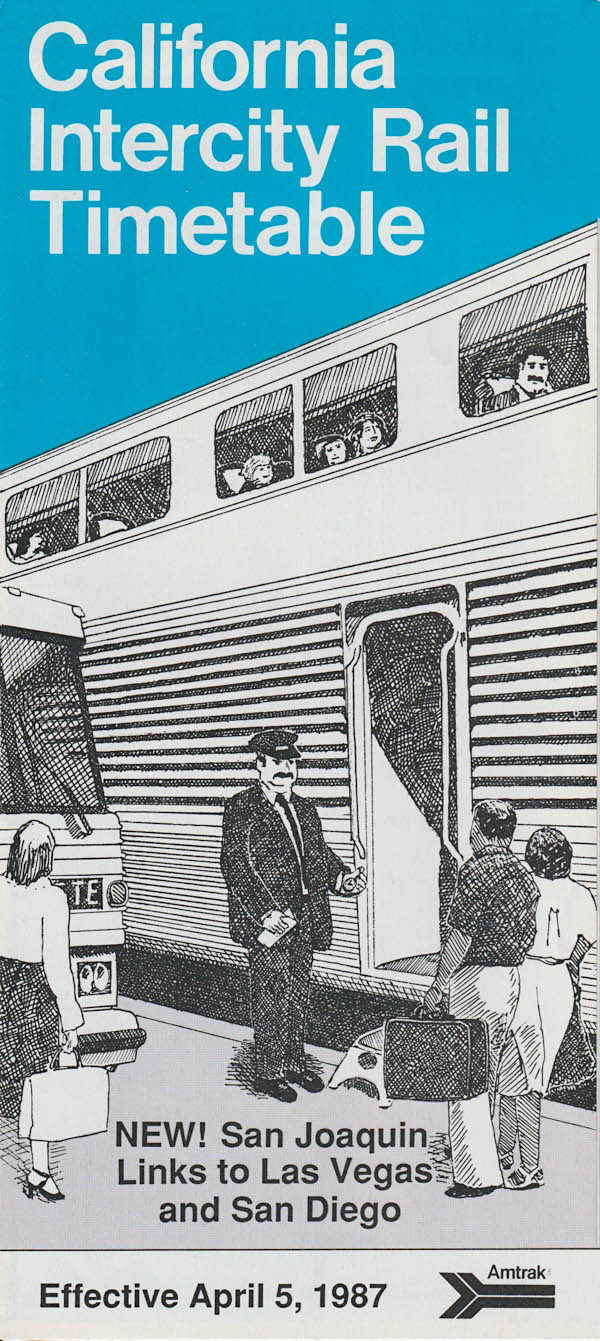
1987 timetable / collection

1987 timetable / collection
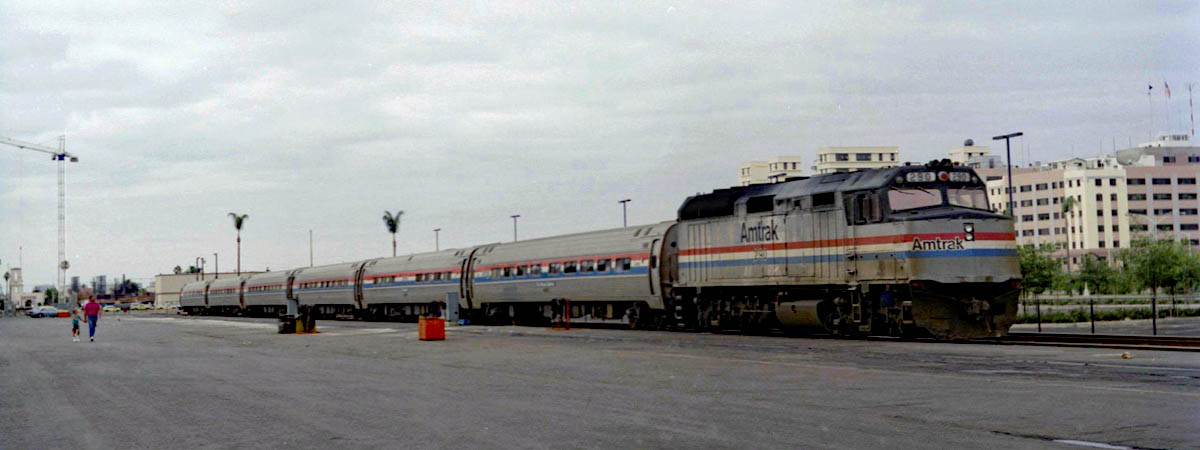
San Diego, Ca / Aug 1987 / JCH

San Diego, Ca / Aug 1987 / RWH

San Diego, Ca / Aug 1987 / RWH
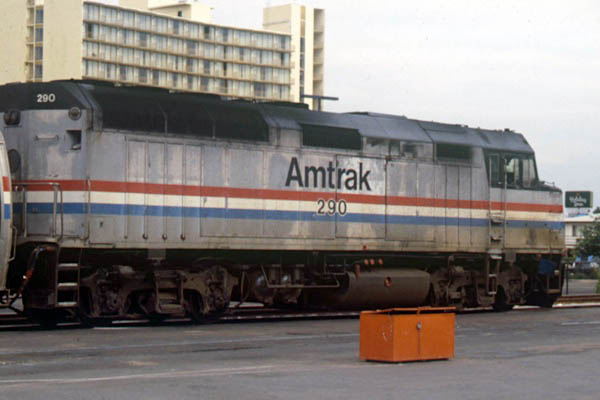
San Diego, Ca / Aug 1987 / RWH
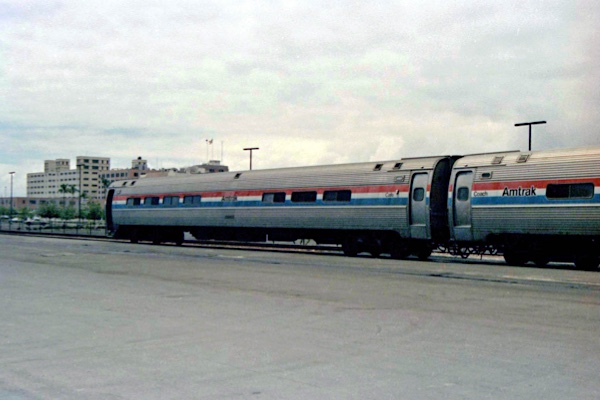
San Diego, Ca / Aug 1987 / RWH
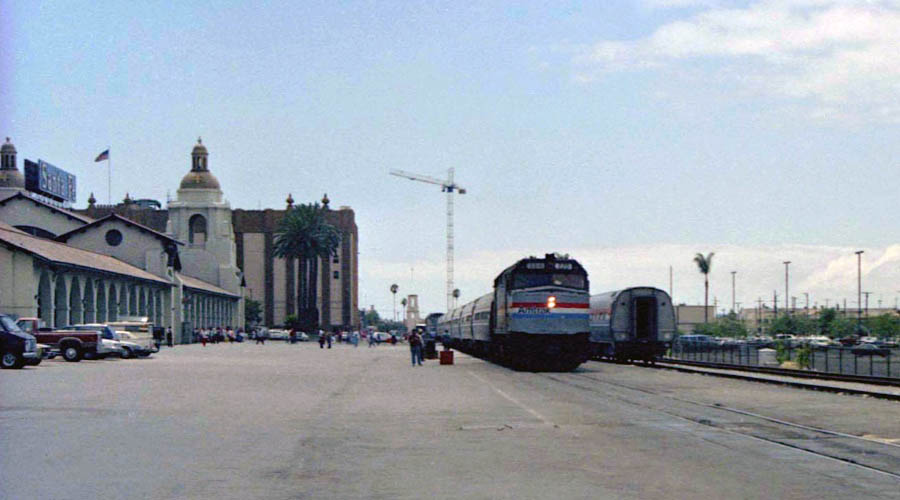
San Diego, Ca / Aug 1987 / RWH
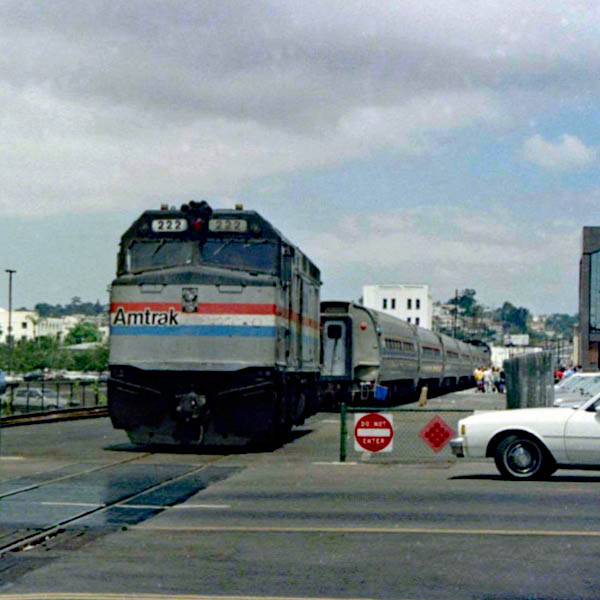
San Diego, Ca / Aug 1987 / RWH
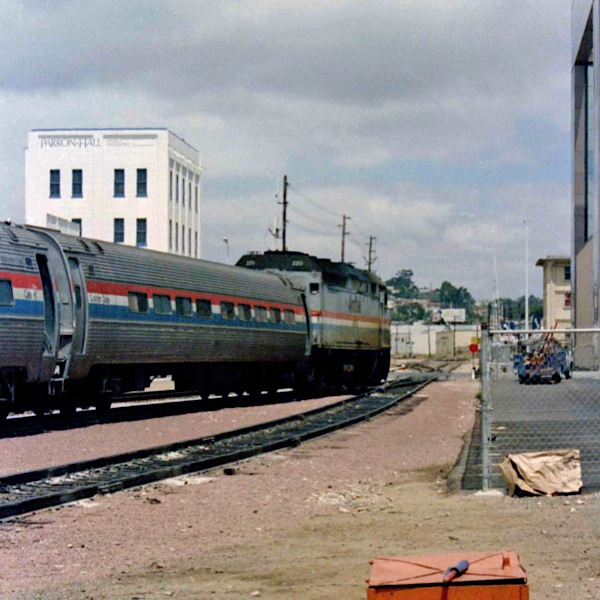
San Diego, Ca / Aug 1987 / RWH
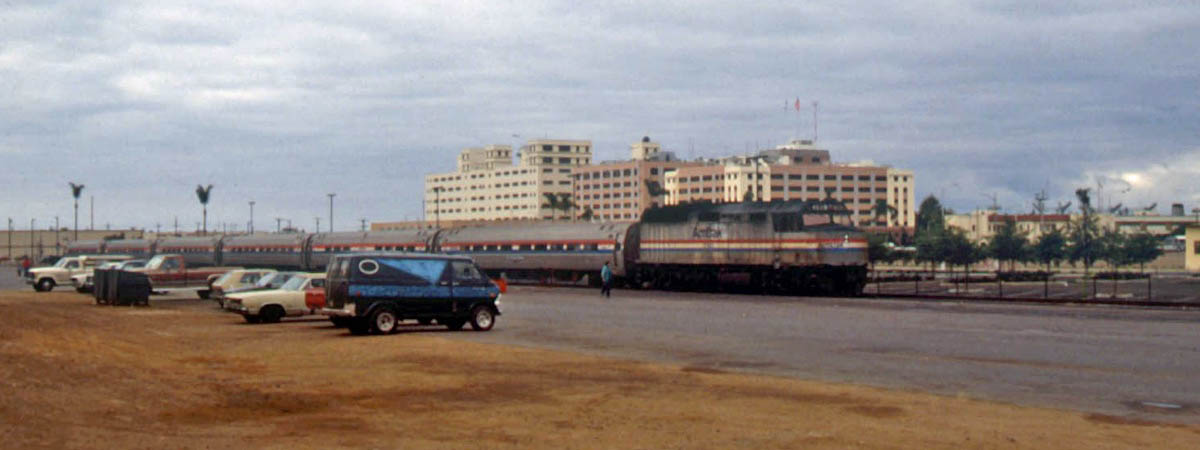
San Diego, Ca / Aug 1987 / RWH

"Native Son"
private car / San Diego, Ca / Aug 1987 / RWH
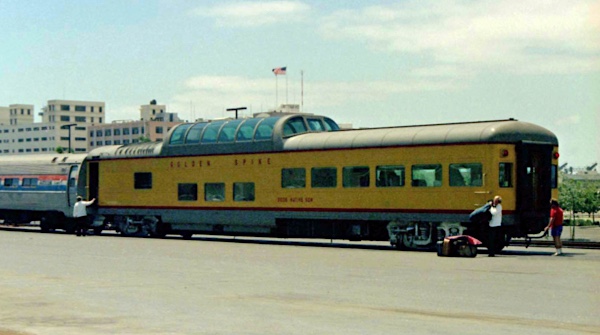
San Diego, Ca / Aug 1987 / RWH
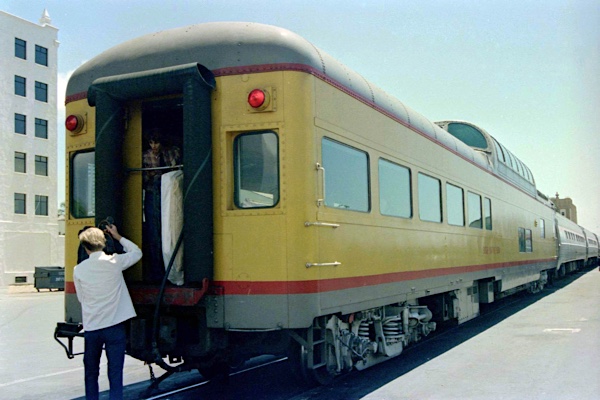
San Diego, Ca / Aug 1987 / RWH
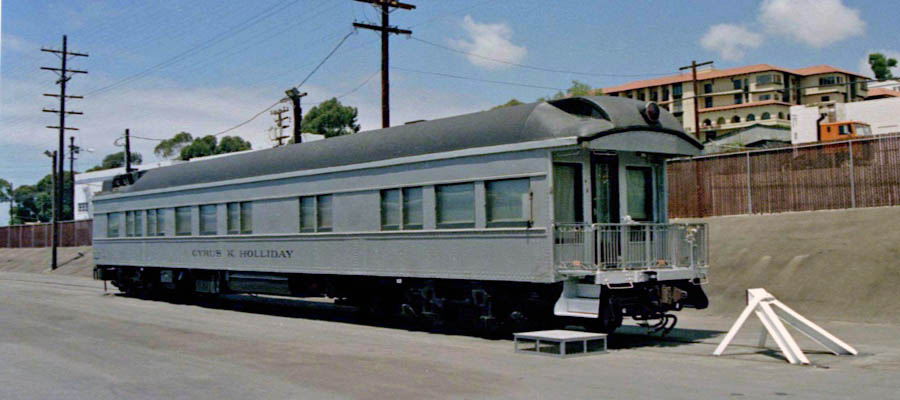
"Cyrus K. Holliday"
private car / San Diego, Ca / Aug 1987 / RWH
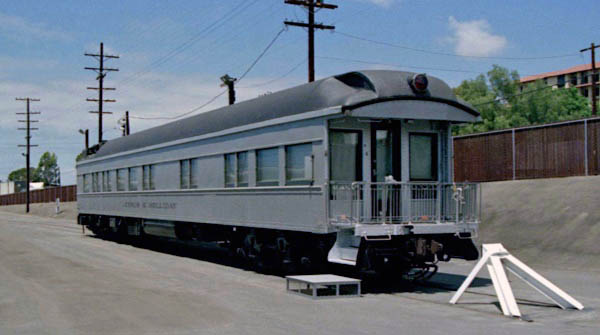
San Diego, Ca / Aug 1987 / RWH
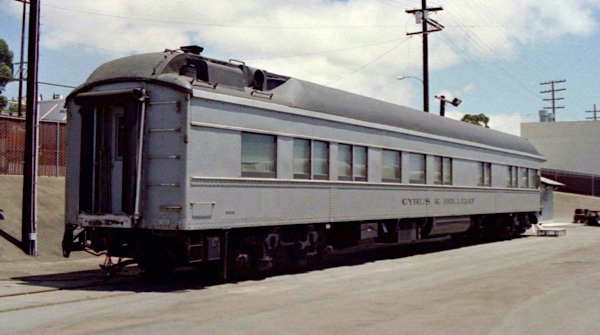
San Diego, Ca / Aug 1987 / RWH
 Snapshots
Snapshots
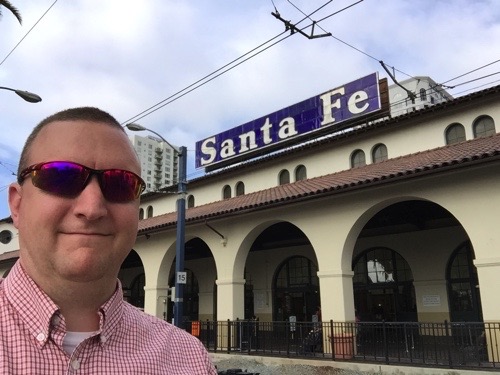
San Diego, Ca / Aug 2015 / RWH
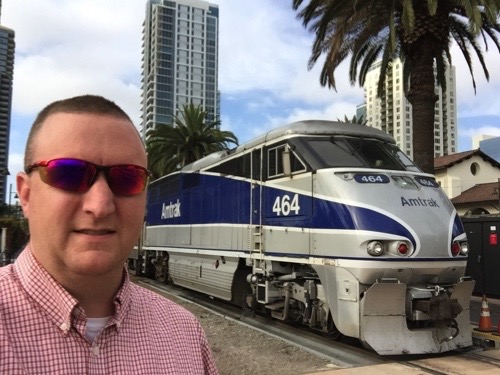
San Diego, Ca / Aug 2015 / RWH
Links / Sources
- Amtrak's official Pacific Surfliner page
- Pacific Surfliner pages
- Wikipedia article for Pacific Surfliner service
- American Passenger Rail Heritage Foundation Surfliners page
